Neglected Croatian Erdody Castle to be Renovated by INg-GRAD
July the 4th, 2022 - Croatia is full of impressive castles and palaces from various periods throughout its turbulent history and over many changes of state and governing body. The Croatian Erdody Castle has sadly been in a state of neglect since the 1980s, but it seems all that is about to change for the better.
The Croatian Erdody Castle is located in Kerestinec and is the oldest remaining building in all of Jastrebarsko, which isn't too far from the City of Zagreb. It was initially constructed by the Erdody family from which it draws its name. This two story structure which has sadly been left to rot to an extent is a first category monument with its Renaissance fortified elements still impressive to this day, despite its general state.
Way back in the year 1565, a man who was working very hard on the construction of the structure which was then surrounded by a moat, Petar II Erdody, was awarded the noble title of count. By the time 1575 rolled around, the castle had been quite significantly expanded and given a new lease of life, with works on it continuing on and off until the late 16th century.
It was rebuilt once again periodically during the 18th and 19th centuries, and fully refurnished in the early 20th century. It has since been left to the often cruel hands of time and the elements, and is absolutely due a revamp before it is lost entirely.
As Poslovni Dnevnik/Mladen Miletic writes, a contract was signed recently in Jastrebarsko between the mayor, Zvonimir Novosel, and the INg-GRAD company, which will enable the start of works on the restoration of the neglected Croatian Erdody Castle.
The deadline for the execution of the works is 480 calendar days from the date of the introduction of the contractor to the work, and the total value of the works stands at a massive 108,194,041.60 kuna excluding VAT.
Due to market disruptions caused by the global coronavirus pandemic and then by the war in Ukraine, that sum exceeds the total value of the castle renovation and revitalisation project, which in accordance with the Grant Agreement, amounts to 73,639,686.93 kuna, of which 49,503,626.59 kuna is being co-financed by the European Regional Development Fund, while the amount of 24,136,060, 34 kuna bas been provided by Jastrebarsko itself.
It's worth noting that despite constant interventions throughout time, as touched on above, the Croatian Erdody Castle has been in a state of disrepair since the late 1980s.
For more, make sure to check out our dedicated lifestyle section.
Eight Must-Visit Croatian Castles, Fortress, and Citadels
June 23, 2022 - In this small guide to Croatian castles, fortresses, and citadels you will find some of the many walled wonders that you can explore in the country, to add a bit of history to your vacation.
It is well known why Croatia is one of the countries where HBO producers set their sights on adapting the acclaimed and popular Game of Thrones novel. Although Croatia is widely known for its Illyrian and Roman heritage thanks to its palaces and amphitheater, many of its castles and fortresses help to display a more medieval side of the country.
For those who have a particular interest in the feudal and medieval history of Croatia, here we review some of the main Croatian castles, fortresses, and citadels that are worth visiting.
Pula Castle
The Pula Castle is a star-shaped castle with four bastions that was built in 1630 to protect the city and its harbor because of its great significance in maritime trade in the North Adriatic. The Venetians commissioned the building of the Castle to the French military architect Antoine de Ville. This was most probably the site of an earlier fortress dating from the pre-Roman and Roman periods. Today the Castle houses the Historical Museum of Istria.
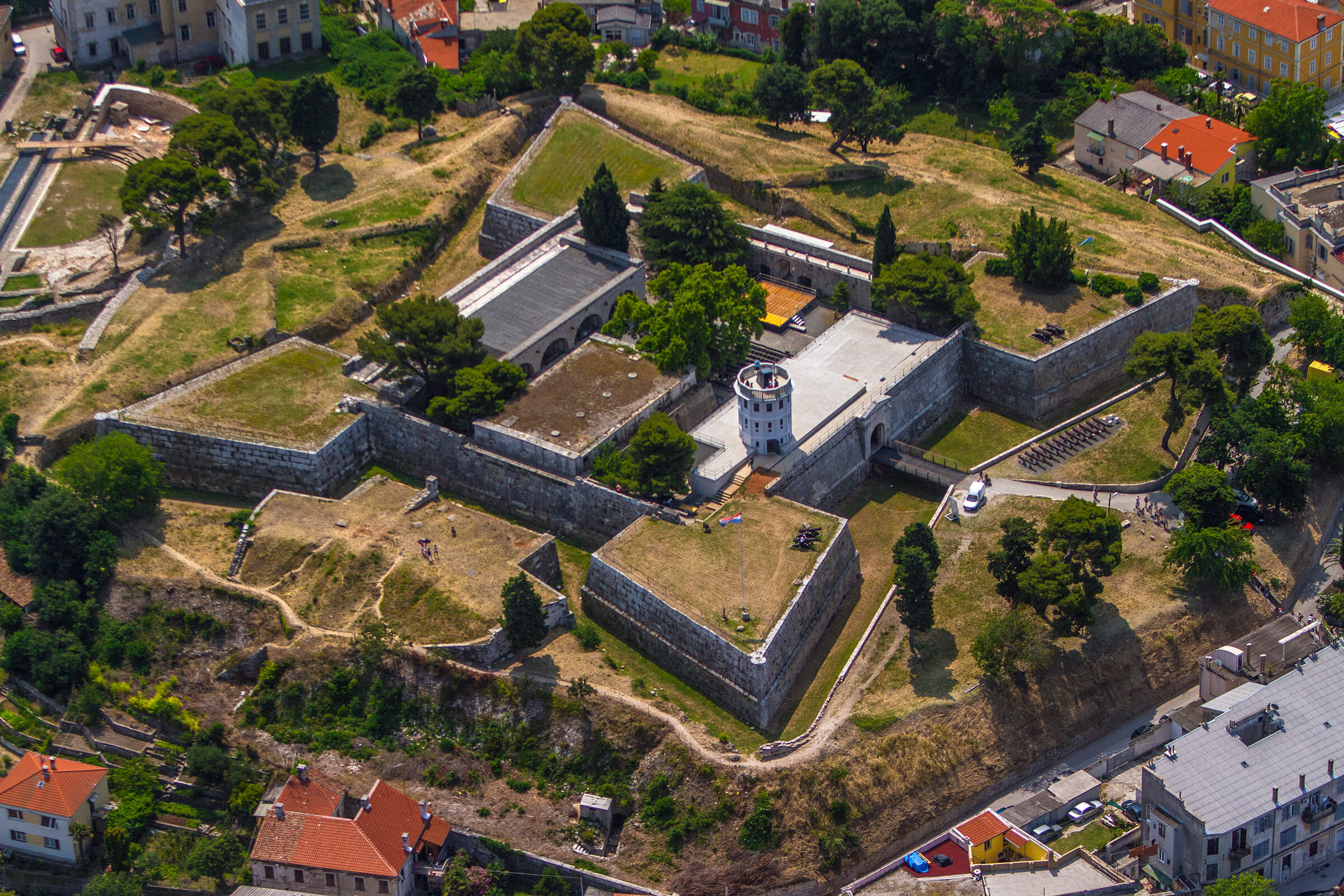
Image: Pula Tourist Board
Trsat Castle
The Trsat Castle served as a lookout on a hill 138 meters above sea level, now overlooking the city of Rijeka. It was mentioned as a parochial center for the first time in 1288. At this same site, there was a Liburnian observation post from prehistoric times, used for monitoring the roads leading from the hinterland to the coast. This location served well for the Romans to establish their defense system, the so-called Liburnian limes, whose starting point was the Tarsatica fortress town, located now in Rijeka's Old Town.
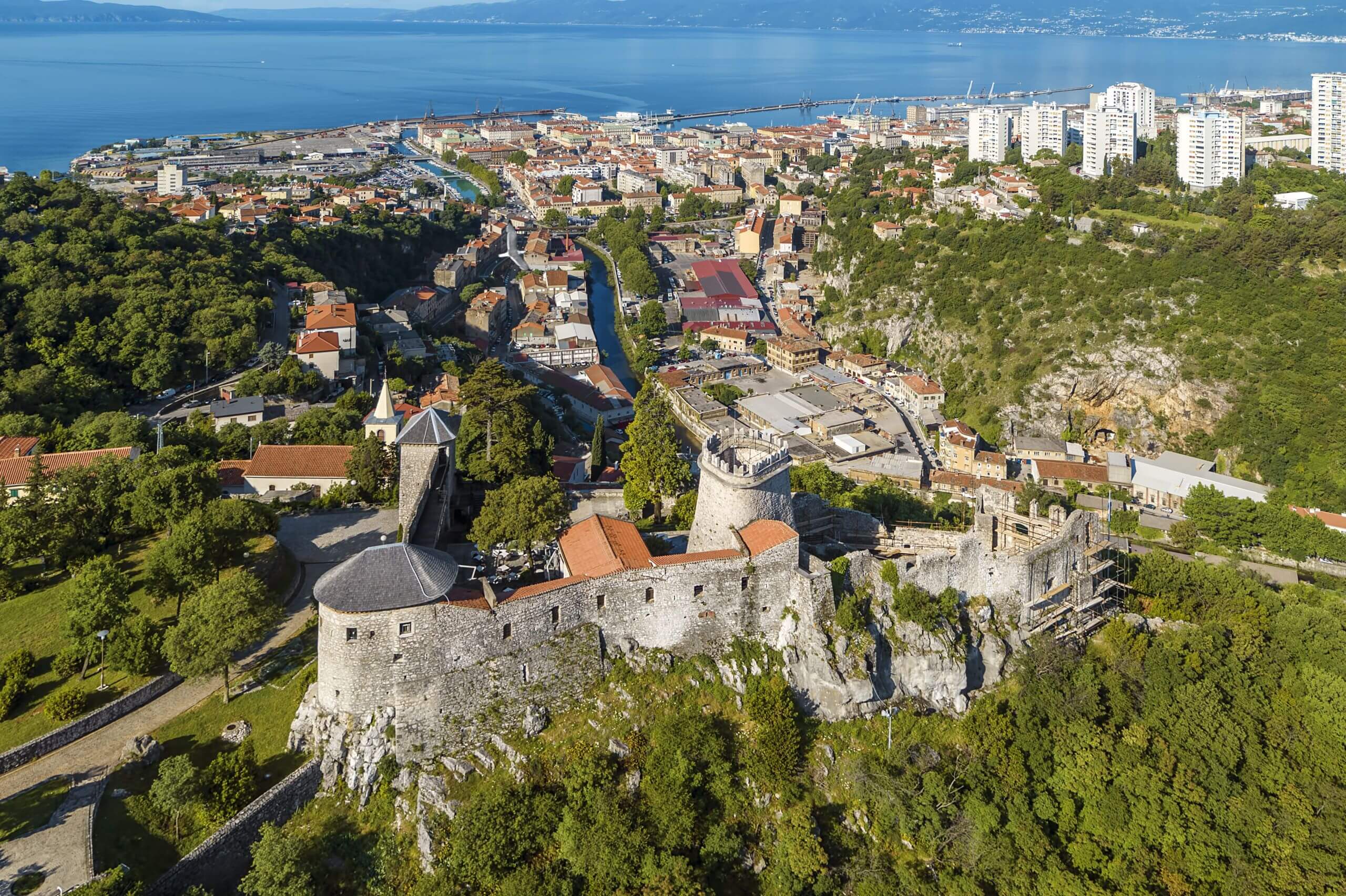
Image: Rijeka Tourist Board
Dubovac Castle in Karlovac
The Dubovac castle is one of the best-preserved and most beautiful monuments of feudal architecture in Croatia. It was built on a hill above the Kupa river and was named after an oak that grows on the surrounding slopes. It changed owners throughout history, changing its appearance depending on current needs and fashion, and got its present appearance after a complete reconstruction in the mid-20th century. It is not known exactly when did construction begin, but books say that it was finished during the 13th century.

Image: Karlovac Tourist Board
Trakošćan Castle
The Trakošćan castle was built at the end of the 13th century in the defense system of northwestern Croatia as a small observation post to monitor the road from Ptuj to the Bednjan valley. According to the legends, the Trakošćan castle got its name from the Thracian fortress, which allegedly existed in ancient times. Another surviving tradition says that it was named after the Drachenstein knights who ruled the area in the early Middle Ages. A museum with a permanent exhibition was founded in 1954.
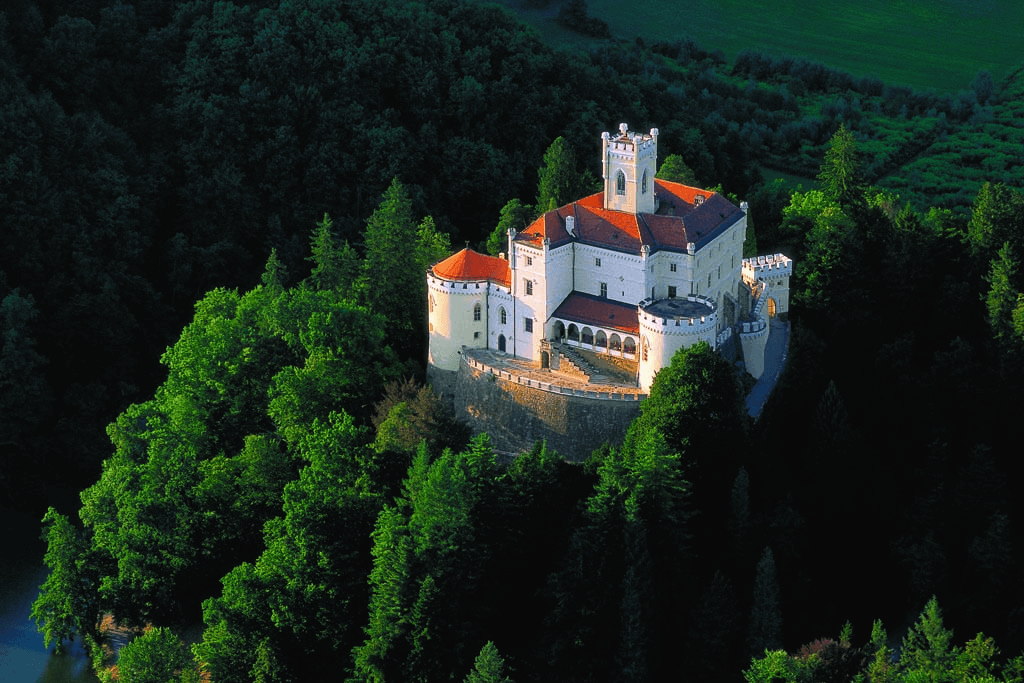
Image: Trakošćan
Varaždin's Old Town
Varaždin’s feudal fortress, known from ancient times as the Old Town, is undoubtedly the most significant historical building in the city. Unlike the royal free city that grew next to and around it, the fort was the heart of the noble estate, which was separate in terms of ownership and law. Disputes between its inhabitants with the citizens of Varaždin were frequent. The fort was built intermittently from the 14th to the 19th century, and its oldest part is the central tower adorned with Gothic benches and canopies, which is a rarity for this type of medieval plastic art in north Croatia.

Photo: Mario Romulić
Medvedgrad in Zagreb
At the top of Medvednica, this picturesque medieval castle has been watching over Zagreb for eight centuries. It was built in 1254, after the catastrophic invasion of Tatars who had raided and devastated this area, burning and razing to the ground the two settlements which later became the city of Zagreb: the burgher’s Gradec and the bishop’s Kaptol. Even though magnificently fortified and always ready for battle, Medvedgrad was never attacked. In 2021, Medvedgrad was reopened to the public with a modern and interactive museum inside.
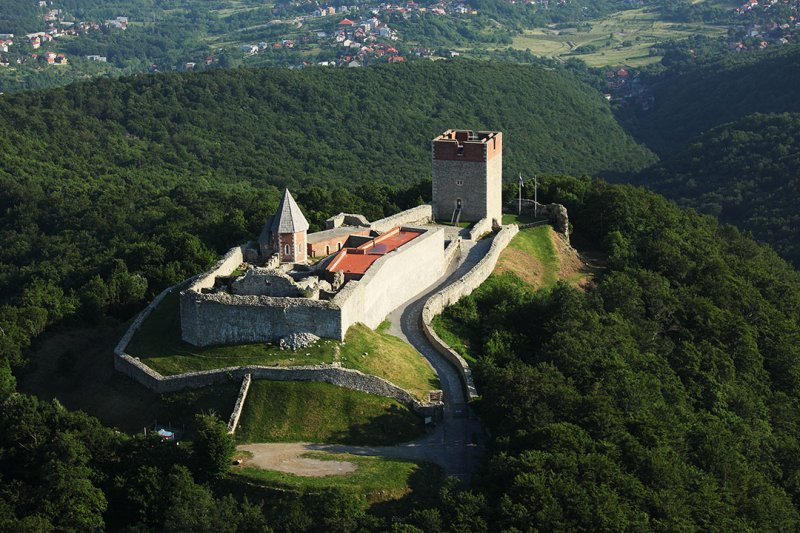
Image: Zagreb Tourist Board
St. Nicholas Fortress in Šibenik
The fortress of St. Nicholas, located at the entrance to the Channel of St. Ante in Šibenik, is a unique Venetian fortification. It was built on the island of Ljuljevac, on the site of the former Benedictine monastery of St. Nicholas, after whom it was named. The construction of the fortress, according to the project of the Venetian architect Gian Girolamo Sanmichelli, began in 1540 after the fall of the city of Skradin under Ottoman rule, when the Venetians had to strengthen the defense of Šibenik, its most important strategic port on the eastern Adriatic coast.

Image: Šibenik Tourist Board
Klis Fortress
Klis fortress was built on an extraordinary strategic location separating the mountains of Mosor and Kozjak that allowed military and commercial control over the whole Klis valley and the area of Salona and Split. Because of its importance, Klis was often referred to as the key to Dalmatia and the heart of the medieval Croatian kingdom. It was built as a small stronghold by the Illyrian tribe Dalmatae, then became a royal castle during feudal and medieval times, and lastly served as a major source of defense against the Ottoman advance.
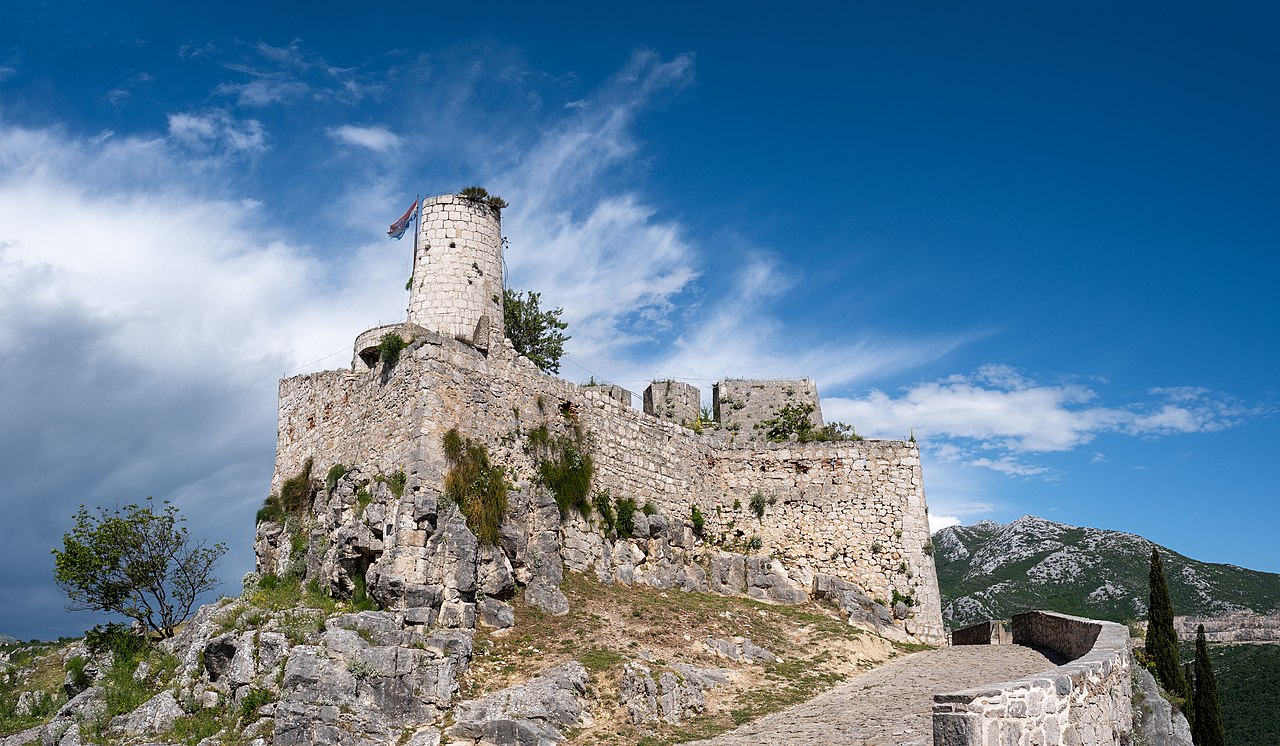
Image: Jules Verne Times Two/Wikimedia Commons
For more on travel in Croatia, follow TCN's dedicated page.
Incredible 18th-Century Castle Oroslavje Donji nr Zagreb On Sale
October 8, 2020 – A bonafide 18th-century Baroque castle is up for sale. Although in a state of neglect, Oroslavje Donji is an architectural gem with huge grounds and lies less than 30 minutes from Zagreb. Its price tag? A cool 1 million Euros.
Zagorje refers to a place behind the mountains. Dalmatinska zagora is the hinterland behind the Dinaric Alps. Hrvatsko Zagorje, often referred to simply as Zagorje is the region behind Medvednica mountain. Dominating the skyline of Zagreb, Medvednica lies just north of the Croatian capital and is much loved for recreation, enjoying nature and feasting on traditional foods. In winter, the far side of the mountain offers skiing and when your skis reach the bottom of the slopes, you're at the entrance to Zagorje. Although, Zagorje has another entrance.
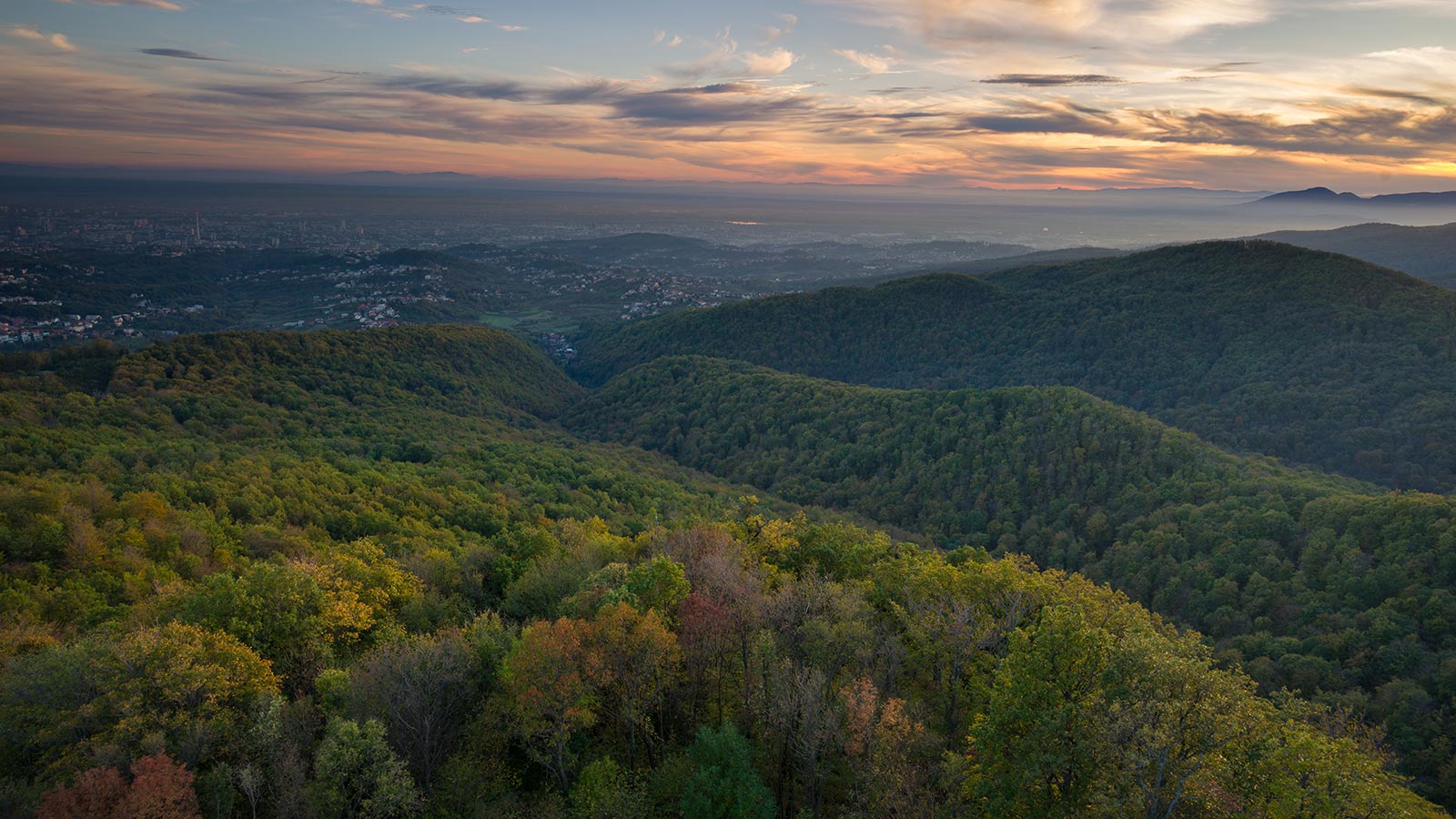 The Medvednica mountain overlooks Zagreb. On the other side lies Zagorje © Antun Cerovečki / Croatian National Tourist Board
The Medvednica mountain overlooks Zagreb. On the other side lies Zagorje © Antun Cerovečki / Croatian National Tourist Board
Oroslavje: The Gate of Croatian Zagorje (Vrata Hrvatskog zagorja)
The pretty town of Oroslavje is sometimes called The Gate of Croatian Zagorje (Vrata Hrvatskog zagorja). Though it lies less than 30 minutes drive from Zagreb, Oroslavje feels far from the bustle and pace of the metropolis. It's the kind of idyllic bolthole that Londoners dream of having half an hour from the English capital, a place where premium properties would be snapped up in an instant by the rich and famous. Such places and properties are rarely attainable in such close proximity to London. But, they are in Zagreb.
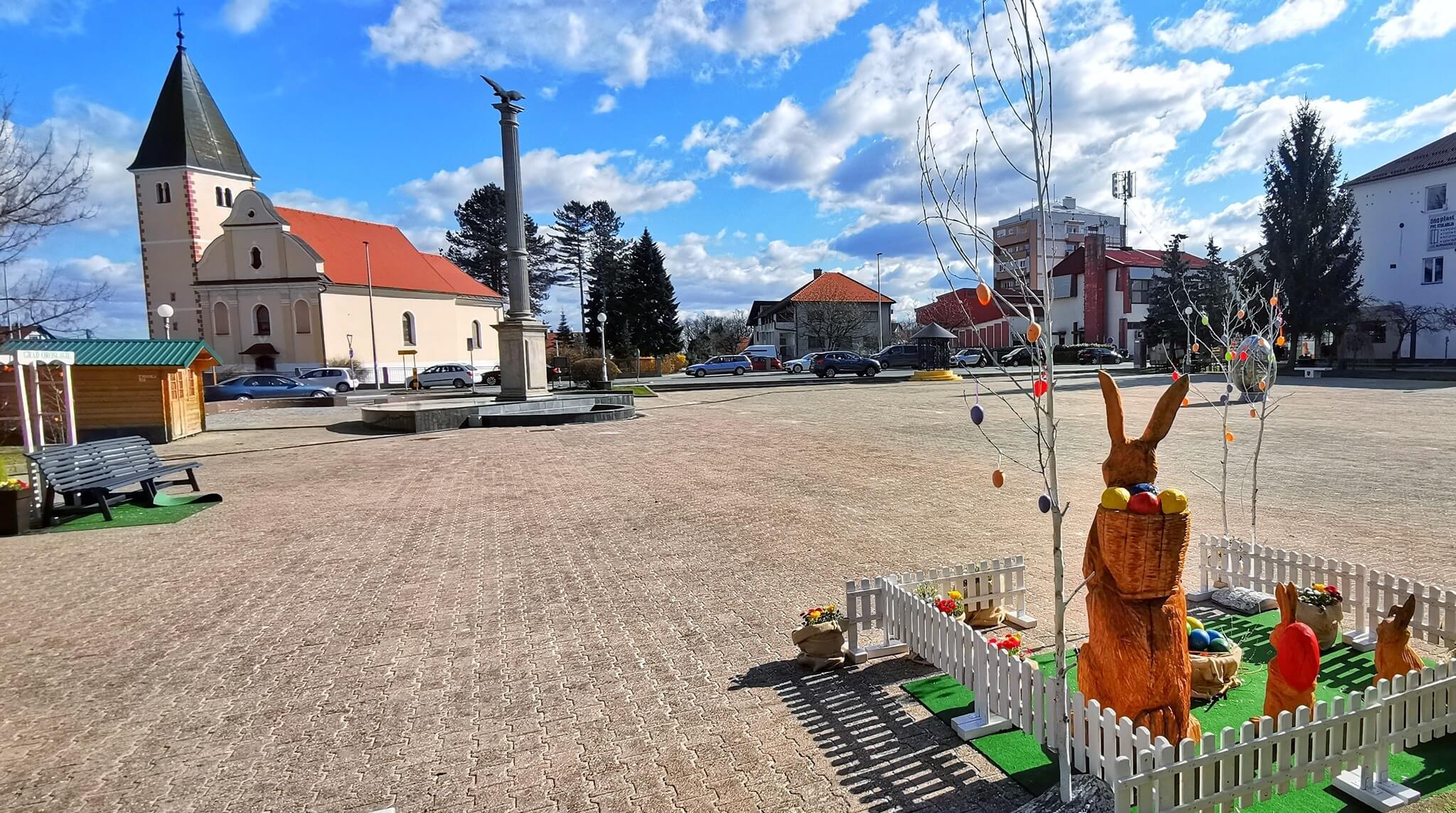 Oroslavje © Grad Oroslavje
Oroslavje © Grad Oroslavje
A bonafide 18th-century castle in Oroslavje has gone up for sale. Oroslavje Donji is a Baroque castle of 1,270 m2 with four wings, an inner courtyard and a park-sized garden that extends an incredible 26,235 m2. Although in a serious state of disrepair, it is an incredibly grand and historic building. The price tag is a cool 1 million Euros.
Opportunities to buy such dwellings do not come around so often. And, in a charming feature on the sale by zagreb.info, co-owners of the building are said to be hesitant about letting it go. Stunning pictures and details make that more than understandable.
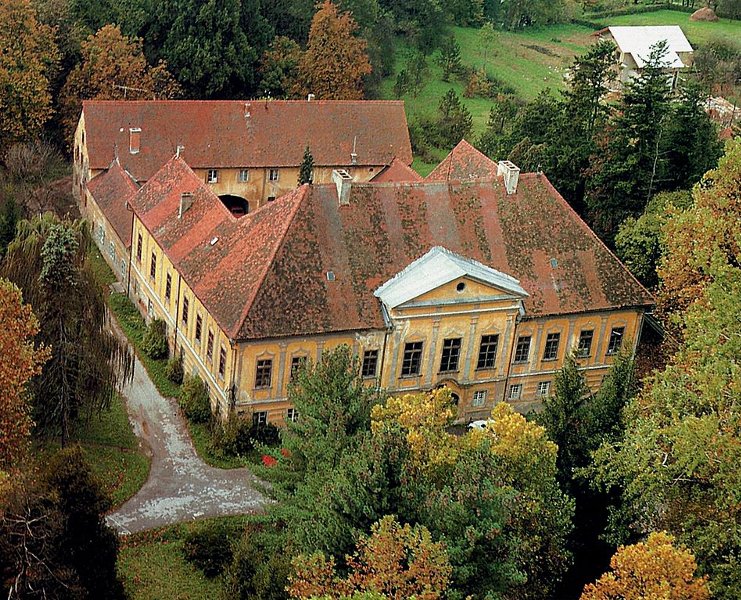 Oroslavje Donji © Njuskalo
Oroslavje Donji © Njuskalo
The first-floor vault of Oroslavje Donji's main hall holds beautiful wall paintings created in the late 18th century. Elsewhere, 19th-century wall paintings can be found, thankfully above the height of the spray paint graffiti left by some unauthorised visitors - the castle has been left abandoned for many years.
 © Turistička zajednica grada Oroslavja
© Turistička zajednica grada Oroslavja
However, most of the building's major architectural details remain intact, as do ornate, original floor tilings. Outside, at the entrance to the park, there is a magnificent baroque portal. Two Baroque statues also lie within the garden which, in line with trends of the time, was furnished in the late 19th century with exotic trees from all over the world. Today, many species of birds make their home within the branches, undisturbed by human presence.
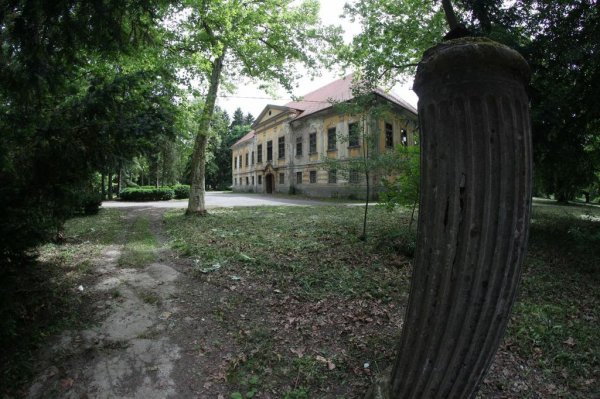 © Turistička zajednica grada Oroslavja
© Turistička zajednica grada Oroslavja
Well connected to Zagreb, Slovenia and Hungary, Oroslavje and other nearby towns were once favoured places to live by the upper echelons of Austro-Hungarian society. Oroslavje used to have two castles, but Gornje Oroslavje was almost completely destroyed by a fire in 1949. Oroslavje Donji was home to the Vojkffy family (Vojković in Croatian).
In a former life: The Vojkffy / Vojković family in Oroslavje Donji
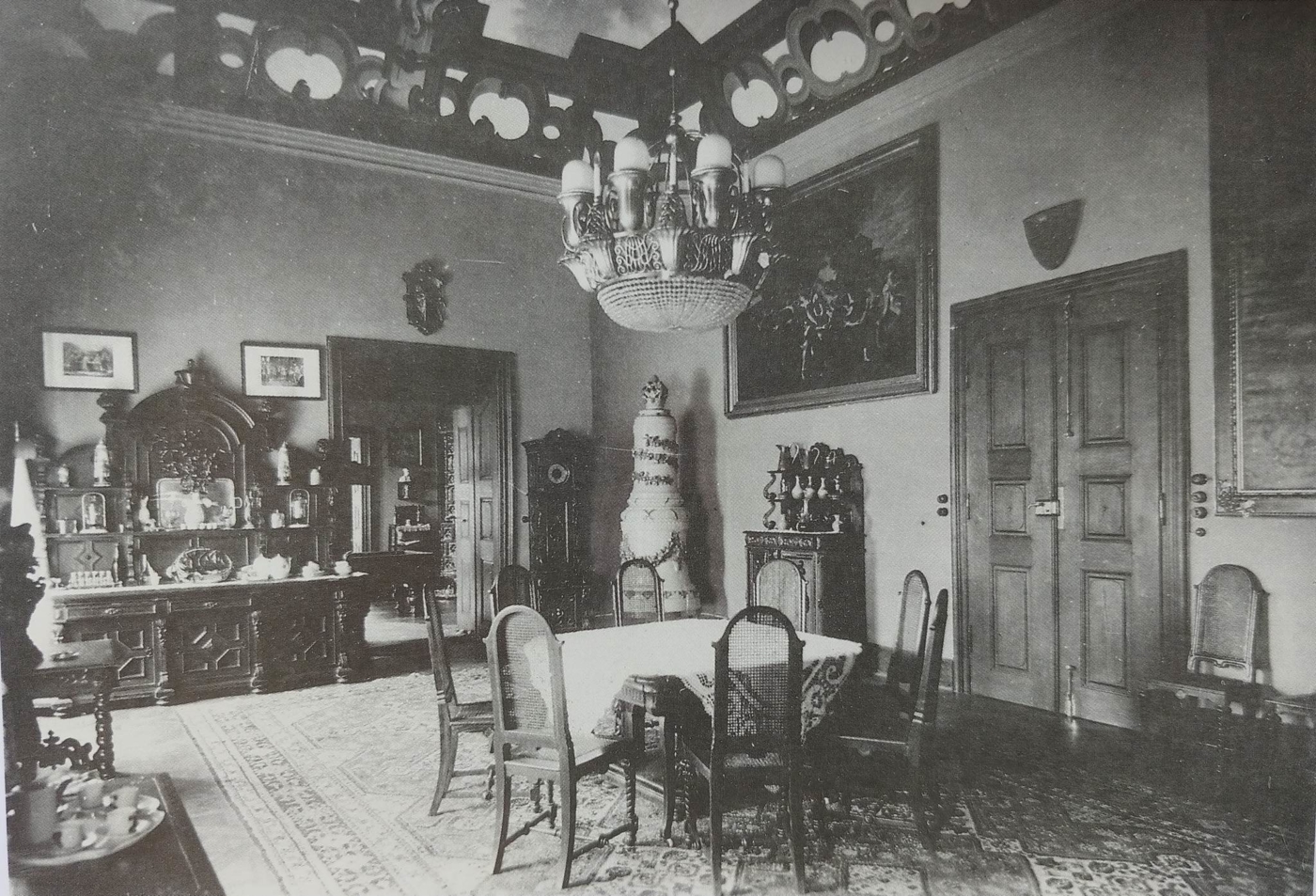 The inside of Oroslavje Donje when still inhabited © Faculty of Architecture University of Zagreb
The inside of Oroslavje Donje when still inhabited © Faculty of Architecture University of Zagreb
The family earned titles and lands for their service to the Austro-Hungarian empire in their struggle against the invading Ottomans. Ivan Vojkffy I (1520–1595) was the captain of the town of Karlovac, and his son Ivan Vojkffy II (1595–1661) captain of the town of Križevci. In the 17th century, the family moved to Hrvatsko Zagorje.
Sigismund Vojkffy was the royal chamberlain and commander of the guards at Schönbrunn Palace in Vienna during the reign of Empress Maria Theresa. For service in the Seven Years' War (1756–63), Maria Theresa awarded both Sigismund and his brother Christopher the title of count in 1763.
 Janko Vojković, son of Sigismund. He lived at Oroslavje Donje © Silverije
Janko Vojković, son of Sigismund. He lived at Oroslavje Donje © Silverije
These were high decorations in the court of the empire. The family subsequently went on to build not only Oroslavje Donje (1770–90) but also the parish church of St. Jelena in Zabok (1782–1805) and several palaces in Zagreb's Upper Town, the most famous of which is the Baroque Vojković-Oršić-Rauch Palace in Matoševa Street. Sigismund Vojkffy died only two years after Oroslavje Donje was completed, but his descendants, including his son Janko, continued to live there.
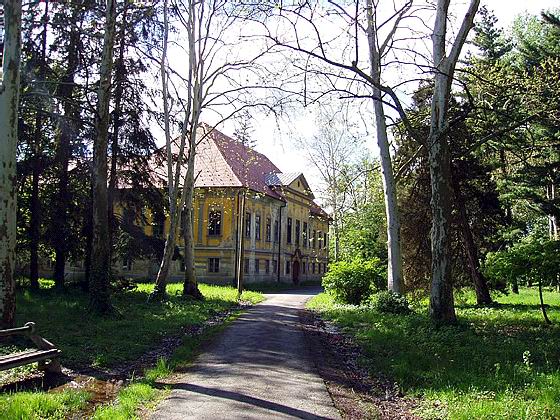 © Turistička zajednica grada Oroslavja
© Turistička zajednica grada Oroslavja
In its golden age, Oroslavje Donje held an approach that was 230 meters in length. In front of the south façade was a decorative garden, to the south-west the park was connected to the forest, and to the left of the approach was a spacious meadow. The last male descendants of the Vojkffy family, Sigismund's grandsons, emigrated from Croatia in the late 19th century. Thereafter, Oroslavje Donje changed hands a number of times before being confiscated by the state in the era of Yugoslavia and subsequently fell into disrepair.
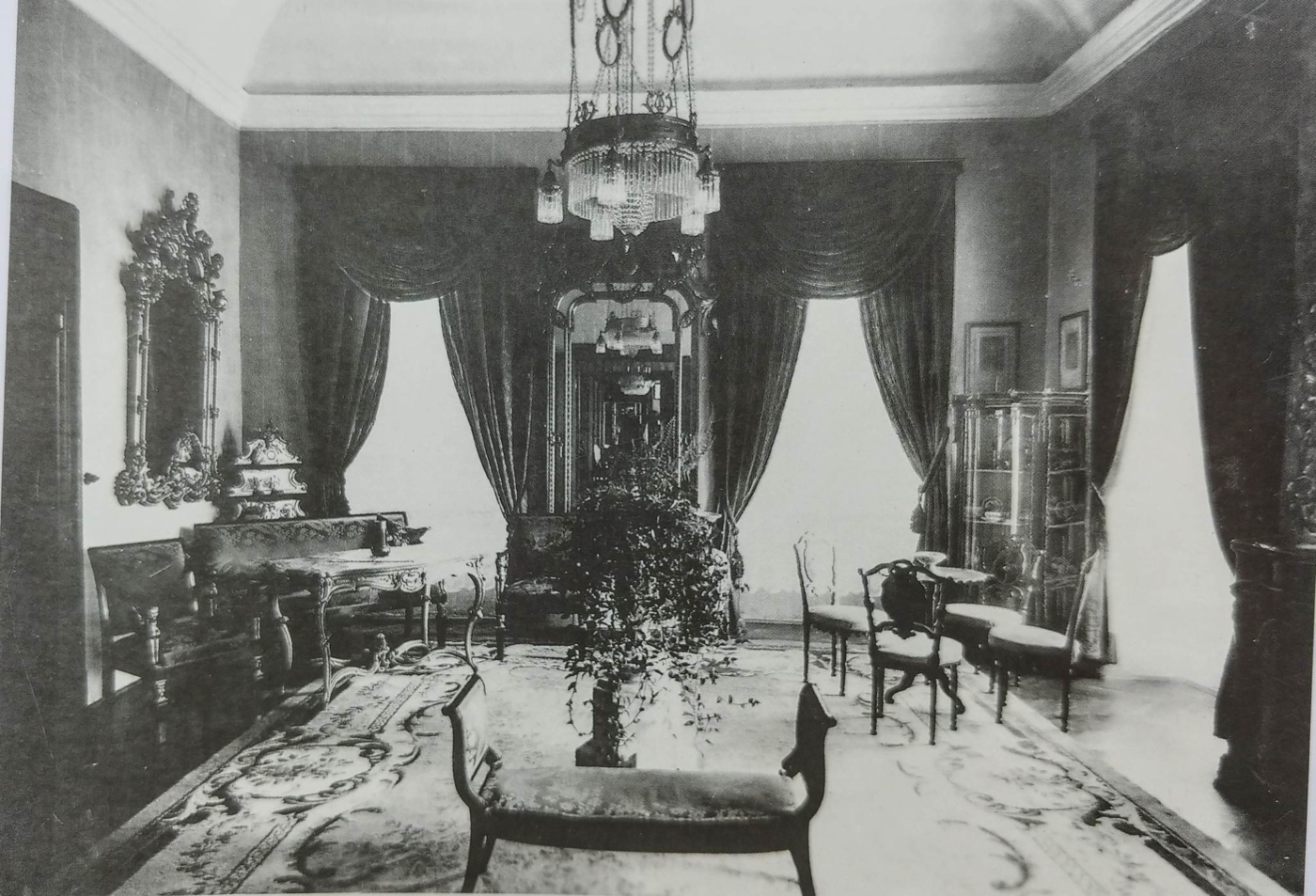 How the interior of Oroslavje Donje looked in its heyday © Faculty of Architecture University of Zagreb
How the interior of Oroslavje Donje looked in its heyday © Faculty of Architecture University of Zagreb
Though few properties like this appear on the market, there are surely a limited number of people who could afford the price tag. Even fewer who would have the funds and determination to restore Oroslavje Donje to its original state of grandeur. But, who knows? A buyer might appear. After all, who wouldn't want to live in a beautiful Baroque castle just 30 minutes from Zagreb?
If you want to read more about some of Croatia's best castles, then look here.
For the latest travel info, bookmark our main travel info article, which is updated daily.
Read the Croatian Travel Update in your language - now available in 24 languages.
Conde Nast Traveler: Trakoscan Makes List of Most Beautiful European Castles
Hardly a stranger to lists, Croatia's beautiful Trakoscan castle finds itself showcased on a list compiled by one of the most well respected publications in the travel game...


